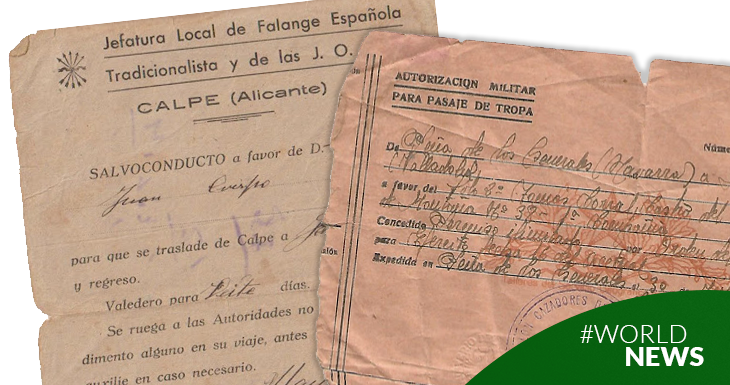Every time we undertake a trip abroad, the first thing we think about is having our passport updated. But do we know why, where or when was it created?
The history of this precious document dates back to ancient times. What we all know today as a passport, was created after the First World War, however, there are mentions, in history, of safe-conduct type documents that allowed the passage of a person from one border to another; borders then determined by kingdoms and domains that today for the most part do not exist.
Where was the first passport born?
The first of these records takes us to the year 450 BC. In the book of Nehemiah, a barely known passage of the Bible, the letters delivered by the king of Persia Artaxerxes to the prophet are mentioned so that he could pass without problems towards the land of Judea, where it is supposed that he would go to rebuild the walls of Jerusalem. The king gave Nehemiah a letter "to the governors of the province beyond the river" requesting safe passage while he traveled through his lands.
Hence the term Safe-conduct or credential letters, assigned to guarantee the passages of envoys from one kingdom to the other, with different purposes.
In ancient China, a document similar to the passport was also issued - with the name, age and characteristics of the bearer - to be able to move freely in areas under Chinese jurisdiction.
In the case of the medieval Islamic Caliphate, only those people who paid their taxes to the state received a document that allowed them to move around it and through its different regions.
In Europe, for its part, the use of "letters of request or safe-conduct" to move freely between kingdoms has been recorded since approximately the 15th century. And the passport that looks more like the one we know today, dates back to the 16th century with Henry V of England. He was the one who began to distribute among his subjects a document to help them be identified in foreign lands.
And after the First World War…
The word passport comes from the French (passeport) which means to go through the port or through the door, because most of the international trips were made on sailboats.
The father of today's passport - the classic multi-page booklet - dates from the time of the end of the First World War. After a war of continental dimensions, the resentments between the victors and the vanquished made the borders rigidly demarcated and guarded places. This war brought a renewed concern for international security, and they were required to move across borders.
However, until then, countries like Great Britain already had something similar: a page folded in three parts and bound, where the bearer's photo and signature were found, as well as a personal description with details such as the shape of the face. , features and complexion.
In 1920, the League of Nations - at the Paris Conference on Passports and Customs Formalities - first established a world standard for passports, ushering in what we now recognize as such.
Finally, passport standardization occurred in 1980, under the auspices of the International Civil Aviation Organization (ICAO). The first passports lacked photography. Progressively, and to avoid falsification of the document, the holder's photograph was updated and added to them.
Today, passports are one of the most precious documents not only by travelers, but by anyone who wants to move across borders.
Between biometric chips, hidden images and other complicated anti-counterfeiting strategies, we can see how passports have evolved over time.
However, in the midst of growing migration crises, it is worth questioning the importance given to an identifying book that has not been with us for more than a century.


